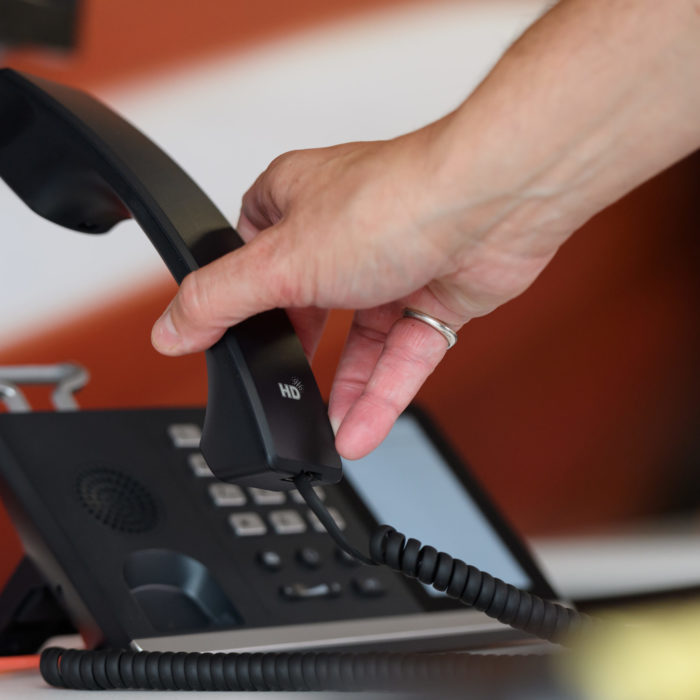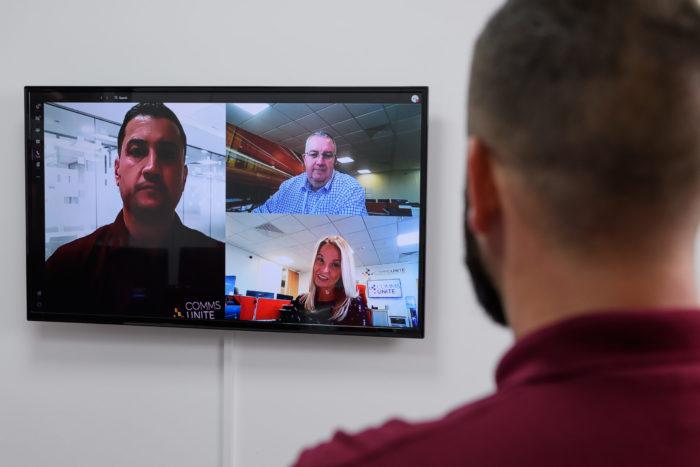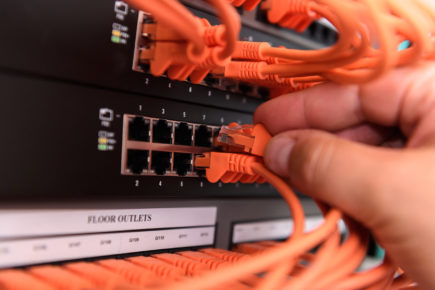
What is a Leased Line?
Leased lines are an excellent way for data-heavy businesses to guarantee a robust, high-speed internet connection at all times. If your services, working practices or fulfilment processes are plagued by slow connectivity at certain times of the day, then a leased line could be the answer to your prayers.
But are they the right choice for your business? Leased lines are typically quite expensive in comparison to standard connections, but their reliability and greater capacity – enabling your employees and business functions to fulfil multiple tasks without delays – can mean they pay off in the long run.
Confident a leased line is for you?
You might not need to read through this entire article to find out. Get in touch today – we’ll get an engineer to follow up and go over all the details for your particular business requirements.
The 3 main benefits of a leased line
A leased line is when you pay for a direct connection between your business and your Internet service provider (ISP), giving you a dedicated line with consistent guaranteed bandwidth. This is a premium service that bestows a high level of certainty and control over your data transfers, uploads and downloads, and ultimately your business.
There are three key aspects of leased lines that can make them a highly attractive option:
1. They are ‘symmetrical’
In this context, being symmetrical means that the line will have the same speed for uploads as for downloads. Typically, with a domestic line or standard business broadband line, you’ll find upload speeds are only 20-25% that of downloads. On a symmetrical broadband line, they are the same. This means information flows equally quickly in both directions, into and out of your office.
2. They are ‘uncontended’
With your line being set aside for your sole use, you will not have any competition for bandwidth, even at peak times of the day. Slow connections arise from multiple users or households in the same area all trying to use a public line at the same time, so this eliminates rival users, guarantees your speed and capacity, and gives you complete control over your data flow.
3. They are ‘point to point’
Leased lines provide a dedicated connection between two entities, i.e. your business and your Internet service provider, with no shared lines in between. A little like the Bat-phone, both parties know for sure who is on the other end of the line, and the service will be superior to that over the usual network.
The end result of a leased line
The ultimate benefit is of course a radical improvement to your working practices. With a dedicated leased line, you can make as much use as you like of video conferencing, VoIP facilities, e-commerce processes, communication between ‘smart’ devices and equipment, cloud computing, downloads or uploads of large files, and other services that rely heavily on data transfer – all without the fear of interruption due to a substandard broadband connection.

How do leased lines work?
Leased lines’ high speeds and ultra-reliable connections have been made possible by the introduction of fibre-optic cables into the broadband and phone network. Old copper cables transferred data signals via electronic pulses through a metal core, which worked fine for simple audio signals and minimal data, but carried far too much friction or resistance for today’s volumes.
Fibre-optic cables transfer data literally at the speed of light via a silica or clear plastic core, almost eliminating resistance entirely. This offers an incredibly high-speed connection that retains its strength over long distances, unaffected by extreme temperatures or damp conditions. Usually, the only limitations on the final speeds you experience will be those inherent in the devices or equipment you are using to receive and process data.
Domestic customers are able to access this through specific broadband packages, but their lines will always still be part of a shared network within the local community. A leased line is a business product that ensures your connection is yours and yours alone – a unique connection between your company and your ISP – guaranteeing the standard of service with no possibility of interference.
There are still variations in the level of service you may receive that will depend on the type of connection you have between your business, the local junction cabinet and the exchange. We’ll explore that next.
Ethernet over FTTC (fibre-to-the-cabinet, also known as Superfast)
This is where fibre-optic cables have been installed up to the local cabinet, but the connection from there to your business premises is via copper wires – usually ‘copper pairs’ to allow for a symmetrical connection. In general, this is fast enough for most uses, but the data signal will be weaker the further away your offices are from the cabinet due to the non-fibre part of the network.
What speeds can I expect from FTTC?
Typical speeds vary between 40-100Mbps, which doesn’t sound like much compared to the ultrafast full-fibre connection above, but does deliver decent results, with some providers offering a ‘bursting’ option for increasing the download speeds. It’ll also be much cheaper, as it requires the least work from the provider.
Ethernet in the first mile (or EFM, or Ethernet Broadband)
If you do not have local fibre lines from the exchange to the nearby street cabinet, then the leased line service will have to rely on the old-style copper network. This will mean the provider installing aggregated copper pairs to facilitate the symmetrical service and make it robust, so in the event of one copper line failing the other will take up the signal. The broadband speeds will be dramatically slower than with a full-fibre connection, but the provider is taking every step they can to maintain the SLA.
What speeds can I expect from EFM?
As mentioned, because there are no fibre cables between your office and the exchange, your provider will not be able to deliver superfast speeds. Much will depend on your location and how far you are from the cabinet, and in turn how far your cabinet is from an exchange, but you could typically expect around 10-25Mbps in either direction.
Putting full-fibre leased lines in perspective
It’s worth bearing in mind that all the above compare favourably to the standard broadband line – or ADSL – which is still classed at ‘fast’ by Ofcom. Domestic broadband over local copper wires typically gives speeds of between 8-24Mbps, but because the line is shared this can drop to as little as 1-5Mbps at peak times or if you are a greater distance from the exchange, especially in colder weather.
Typical speeds for domestic STTC vary between 30-60Mbps, but again this will be subject to daily fluctuations. Providers advertising ultrafast full-fibre lines usually state speeds between 150-950 Mbps. And remember that upload speeds are typically 20-25% less than download speeds on shared or ‘contended’ lines. If you’re relying on your broadband connection to share huge files or large amounts of data, then this could be a big setback for your business.
If you have copper at any stage of your connection, you should definitely consider the advantages of a dedicated leased line over a standard public shared line. No fluctuations at certain times of the day. Symmetric speeds for downloads and uploads. Greater average capacity and speeds in general. Total control and accountability over your Internet connection. However, with a full-fibre leased line, all concerns over speed and bandwidth are virtually eliminated.
Whatever your type of connection, you would have to check with your provider exactly what symmetric download and upload speeds they are able to guarantee on a dedicated leased line to your office.
Do I need a leased line?
It’s true that some types of businesses will benefit more from a dedicated leased line than others. Any company that makes frequent use of VoIP, video conferencing, live streaming, extensive data transfer or large file uploads for sharing and approval (to name just a few examples) will see a marked improvement in the efficiency of their day-to-day operations.
It’s also important to note that the SLA on a leased line will guarantee that any problems are usually fixed within hours rather than days, relieving you of the stress and potential lost revenue caused by lengthy downtime.
But, in the long run, a dedicated, symmetrical ultrafast connection will be an attractive proposition for any business. Having certainty over your broadband speed and capacity at all times means you and your teams can get on with tasks without having to waste time waiting for files to be shared or stuttering your way through important conference calls. A few key business types that might benefit most from a dedicated leased line are as follows:
Financial services
Having a constant, reliable data stream providing up-to-the-millisecond information on trading figures, interest rates and product options provides a distinct advantage to companies working in any aspect of the financial sector.
Communications and tech firms
As we understand very well ourselves, if you’re delivering services that rely on cloud-based software and split-second responses – such as VoIP systems, SaaS products, cloud accounting and inventory management, or any service involving complex app infrastructure – a leased line is pretty much required rather than desired.
Companies with a larger workforce
It’s now almost standard for companies to use cloud-based applications for accounting, invoicing, payroll, performance monitoring and CRM systems, which can generate a huge amount of constantly-updated information. If you’re also including VoIP and video conferencing in the mix, then you’ll need a highly-stable, robust broadband connection.
E-commerce
When doing business online, it’s essential to provide a fast response time to customers, deliver the purchase process as smoothly as possible and enable a speedy upload of any digital products or support resources. The ability to handle large amounts of customer data in order to gain insights into preferences and behaviour will also be of considerable use to your business.
Entertainment
Be it online gaming, live streaming of sports or concerts, or a film or video service, you’ll want a dedicated line to guarantee the speed of response and interaction, as well as provide an unbreakable connection (at least from your side!).
Design services
The level of definition and detail expected in all aspects of design means digital files shared with clients and other businesses have become, in many cases, gargantuan. Uploading finished high-definition artwork, large-scale 3D product designs or complex, layered drawings can potentially take hours over a standard shared line. A leased line means communications can be fast and efficient.

What to check with your leased line provider.
Getting a leased line installed for your company use can be a significant investment, but one that will pay off if you ensure the level of service is exactly what you need. Here are the important elements to include in any discussion with your provider:
Is a leased line the right choice for you?
Taking into account everything discussed above, if you think your business can benefit from a dedicated leased line, we can work with you to make sure it fits your business model. We can undertake an audit of your systems and internet use, so that you can see a comparison of your current set-up with a leased line in order to make an infrared choice.
Give us a call on 01473 599020 or email hello@comms-unite.co.uk to find out your options and weigh up the benefits of a leased line, whether full-fibre or using a local copper network.







